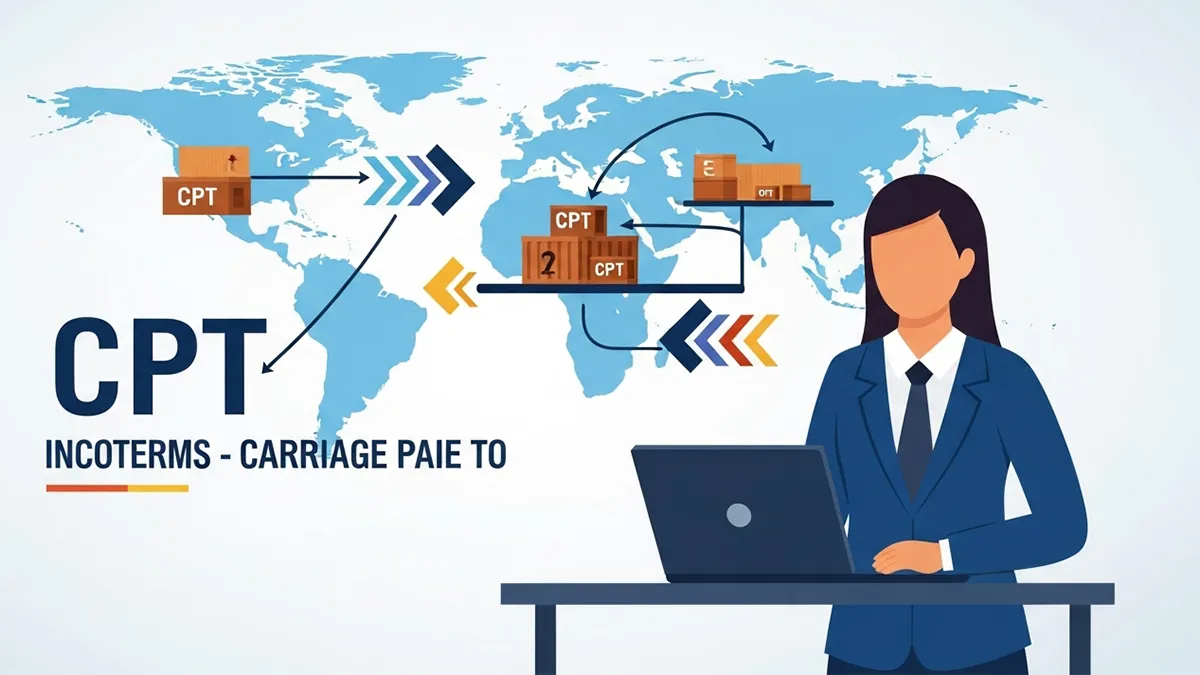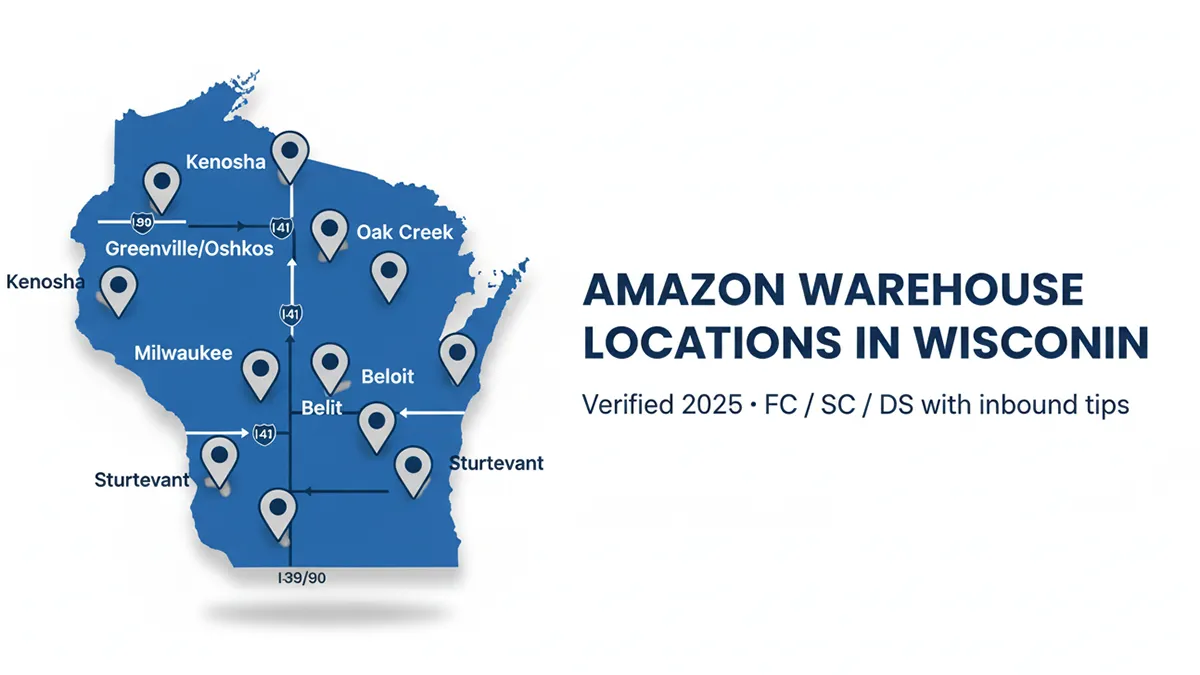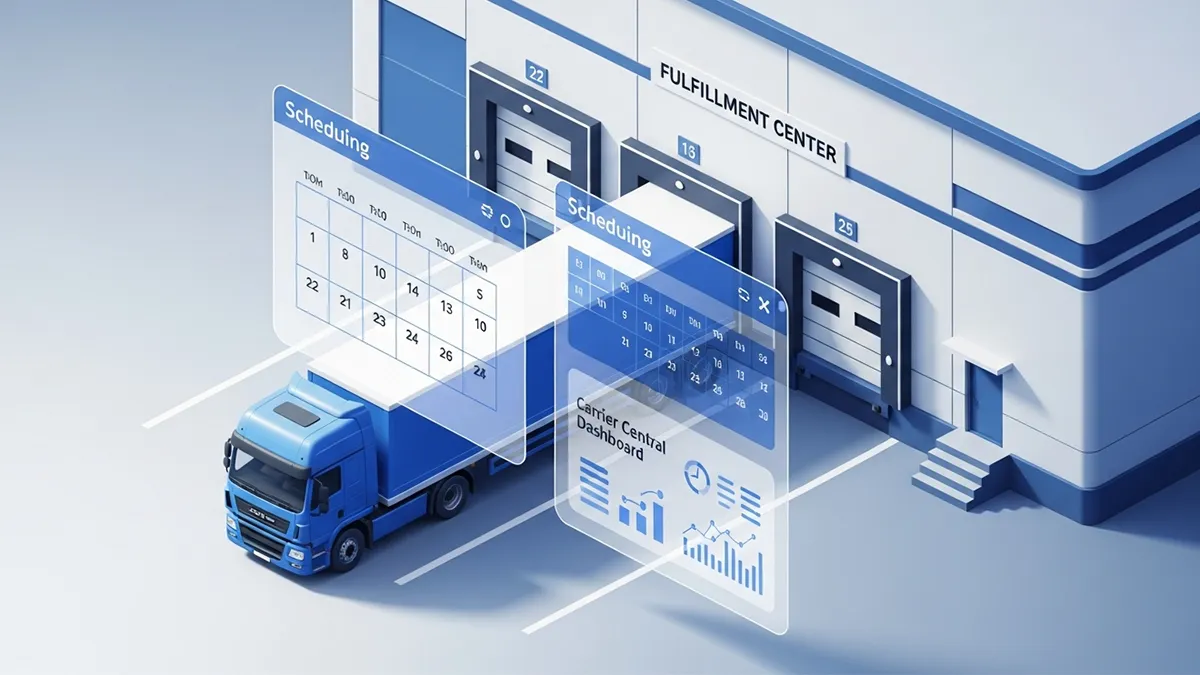CPT Incoterms (Carriage Paid To): The Complete 2025 Guide for Importers & Amazon Sellers
What Does CPT Mean in Shipping?
CPT (Carriage Paid To) is an Incoterm where the seller pays the freight cost to an agreed destination, but the buyer assumes all risk as soon as the goods are handed over to the first carrier. CPT applies to all transport modes. The seller covers export charges and main freight, while the buyer handles insurance, import customs, duties, and final delivery.
If you import goods from China, Southeast Asia, or Europe—whether for Amazon FBA, wholesale distribution, or direct-to-consumer (DTC) retail—you’ve likely seen suppliers quote CPT (Carriage Paid To).
But here’s the dangerous truth:
Many buyers think CPT is similar to DDP or CIF because the seller “pays the freight.”
In reality, CPT is one of the riskier Incoterms for importers, especially when shipping internationally by sea or air.
Understanding CPT is essential for:
-
Importers controlling shipping cost & supply chain reliability
-
Amazon FBA sellers avoiding customs delays or unexpected fees
-
Companies using LC payments
-
Anyone shipping from China and unsure whether CPT or FOB is better
This guide explains CPT in simple language—covering definitions, responsibilities, risk transfer, examples, comparisons with other Incoterms, and expert insights based on real China–USA trade.
If you’re new to Incoterms generally, you may find our China Freight Forwarding Guide helpful to understand how CPT fits into broader logistics strategies.
1. What Does CPT Mean in Shipping? (Carriage Paid To Explained)
Definition

Under CPT, the seller pays the freight to bring the cargo to a specified destination.
However—risk transfers extremely early, when the seller hands the goods to the first carrier.
According to the Incoterms® 2020 rules by the International Chamber of Commerce (ICC):
The seller pays for transportation. The buyer assumes risk once the goods are delivered to the first carrier.
Unlike FOB (risk at ship loading) or CIF (risk on ship’s rail), CPT shifts risk before goods even leave the origin country.
CPT Applies to All Transport Modes
-
Air freight
-
Sea freight
-
Road freight
-
Rail freight
This flexibility makes CPT attractive in regional or inland logistics, but risky for long-distance international shipping.
2. CPT’s Two Critical Locations (Delivery vs Destination)
CPT requires defining two different places:
(1) Delivery Point → Where Risk Transfers
This is when the seller hands goods to the first carrier at origin.
Examples:
-
Factory truck pickup
-
Warehouse forklift transfer
-
Handover to a freight forwarder
-
Delivery into an airport cargo terminal
At this moment, the buyer becomes responsible for all risks—damage, theft, loss, delays—even though the seller is still paying for freight.
This is the most misunderstood part of CPT.
(2) Destination Point → Freight Paid To
This is the place where seller-paid freight ends.
Examples:
-
Port of Long Beach
-
Chicago rail terminal
-
Buyer’s inland CFS warehouse
-
Airport of destination (LAX/JFK)
The seller pays freight until this point, but risk has long been transferred.
This dual-point structure creates confusion, especially for buyers unfamiliar with China freight processes.
For step-by-step illustrations of risk transfer, our How to Ship to Amazon FBA guide provides helpful visual references.
3. Seller Responsibilities Under CPT
Under CPT, the seller must pay for all export-side logistics and the main freight.
Seller pays for:
-
Export-grade packaging
-
Loading at the factory
-
Inland trucking to origin terminal
-
OTHC (Origin Terminal Handling Charges)
-
Export documentation & customs
-
Loading onto first carrier
-
Main freight to the destination
-
DTHC (Destination Terminal Handling Charges)
Even though the seller pays DTHC, import fees remain the buyer’s responsibility—a common misconception.
Seller is NOT responsible for:
-
Cargo insurance
-
Import customs exams
-
Duties & VAT
-
Final-mile delivery
-
Any delay after handover to the carrier
4. Buyer Responsibilities Under CPT
After goods are handed to the first carrier, the buyer is responsible for everything else.
Buyer covers:
-
Risk of loss/damage from the handover point
-
Transit delays outside seller’s control
-
Insurance (optional but recommended)
-
All import customs duties & taxes
-
Destination trucking to warehouse
-
Warehouse unloading costs
-
Storage, demurrage, and detention
Why this is dangerous
Buyers often believe:
“Seller pays everything to the port, so I’m safe.”
But under CPT, risk has already shifted to the buyer, even if cargo is still in the origin country.
To avoid these risks, many importers prefer FOB or DDP. Our FBA Appointment & Compliance Guide explains how Incoterms affect inbound Amazon requirements.
5. CPT Advantages for the Buyer
CPT can be beneficial in certain controlled environments.
✔ Advantage 1: Predictable Freight Costs
Seller pays to the agreed destination → simplified budgeting.
✔ Advantage 2: No Need to Manage Export Logistics
Buyers don’t deal with China export paperwork or origin trucking.
✔ Advantage 3: Works Well for Overland Transport
Especially when:
-
Cargo moves by truck only
-
Only one carrier is involved
-
Regional cross-border movement (e.g., China → Hong Kong, EU cross-border trucking)
✔ Advantage 4: Convenient for Large Importers With Local Teams
If a buyer has a customs broker and inland logistics partner, CPT can reduce seller-side complexity.
6. CPT Disadvantages & Hidden Risks (Most Importers Should Avoid CPT)
This is where CPT becomes problematic—especially for China–USA or China–EU shipping.
❌ Disadvantage 1: You Pay Before Knowing Cargo Status
Risk transfers at the moment cargo is handed to the first carrier.
But the seller can receive a Bill of Lading or Air Waybill even before cargo physically leaves the gate.
This means the buyer may be obligated to pay while the goods are still sitting in the origin city.
❌ Disadvantage 2: Buyer Doesn’t Know the Carrier
Unless specified, the seller may choose:
-
The cheapest consolidator
-
A forwarder with slow transit
-
A carrier with poor tracking
-
A provider with minimal support for customs exams
Lack of visibility harms your entire supply chain.
❌ Disadvantage 3: Transit Customs Clearance Becomes Buyer’s Responsibility
If the cargo passes through multiple jurisdictions:
-
Hong Kong
-
Singapore
-
EU hubs (Rotterdam / Hamburg)
-
US transload terminals
The buyer must manage transit documentation—even though the seller booked the freight.
❌ Disadvantage 4: Not Suitable for Air Freight
Air cargo often involves:
-
Airport CFS
-
Airline handlers
-
Third-party trucking
-
Multiple cross-dock steps
Risk transitions between parties, often without the buyer’s knowledge.
❌ Disadvantage 5: Complicated for Letter of Credit (LC) Transactions
Under CPT:
-
Delivery point ≠ destination
-
BL may show seller’s warehouse as origin
-
Destination may differ from LC terms
This discrepancy can easily result in LC rejection.
7. CPT vs FOB vs CIF vs DDP (Clear Comparison for Importers)
CPT vs FOB
| Comparison | CPT | FOB |
|---|---|---|
| Who pays freight? | Seller | Buyer |
| When does risk transfer? | Upon handover to first carrier | When goods cross ship’s rail |
| Buyer visibility | Low | High |
| Best for | Inland trucking | International sea freight |
CPT vs CIF
| Comparison | CPT | CIF |
|---|---|---|
| Includes insurance? | ❌ No | ✔ Yes |
| Transport modes | Any | Sea only |
| Risk transfer | Early | When cargo is loaded on ship |
CPT vs DDP
| Comparison | CPT | DDP |
|---|---|---|
| Seller handles import duties? | ❌ No | ✔ Yes |
| Buyer risk timing | Very early | Upon delivery |
| Recommended for FBA? | No | Yes |
8. When Should You Use CPT?
CPT is appropriate when:
✔ Cargo moves by truck only
Example:
-
China → Hong Kong
-
Germany → Poland
-
USA domestic trucking hub → local DC
✔ You have your own customs broker
Large enterprises with strong inland teams can manage risk better.
✔ Export country has complex regulations
Letting the seller manage origin side can sometimes simplify compliance.
9. When Should You Avoid CPT? (Most China Importers Should Not Use It)
❌ International sea freight (China → USA/EU)
Risk transfers in China, long before cargo moves → too dangerous.
❌ Air freight shipments
Too many carriers involved.
❌ High-value or fragile cargo
Insurance does not come from seller; buyer carries the risk.
❌ Amazon FBA shipments
FBA requires predictable timelines; CPT reduces visibility.
❌ Multi-country transshipments
Buyer must manage transit customs.
For 95% of importers shipping from China, FOB is significantly safer.
10. CPT Example Scenarios
Scenario A: China → USA (Sea Freight)
-
Seller arranges trucking + sea freight + DTHC
-
Risk transfers when cargo is handed to origin trucker
-
Buyer assumes risk even before cargo leaves the city
-
Buyer pays import duty and final delivery
-
CPT not recommended
Scenario B: China → Hong Kong (Truck)
-
Simple one-carrier movement
-
Seller pays trucking
-
Risk transfers early, but route is short
-
CPT works well
Scenario C: Germany → France (Rail)
-
EU cross-border shipments
-
Low risk
-
CPT can be beneficial
11. CPT FAQ
Does CPT include insurance?
No. Insurance must be purchased by the buyer.
Is CPT recommended for Amazon FBA?
No—choose FOB or DDP instead.
Does CPT include import duty?
No. All import taxes, exams, and customs fees belong to the buyer.
Is CPT the same as CIF?
No. CIF includes insurance and applies only to sea freight.
When is CPT safe?
When the shipment uses a single carrier, typically for overland trucking.
12. Your Trusted Partner for Safer Incoterms & China Shipping
Choosing the wrong Incoterm—especially CPT—can result in:
-
Hidden fees
-
Unknown carriers
-
Transit delays
-
Customs complications
-
Loss of shipment visibility
At ZBAO Logistics, we help importers:
-
Compare CPT vs FOB vs DDP for your business
-
Handle FCL & LCL sea freight
-
Provide USA/Canada/Europe customs clearance
-
Manage Amazon FBA rules & final delivery
-
Offer professional China-side export support
Whether you’re an FBA seller, a B2B importer, or a distributor, we ensure your supply chain stays predictable, compliant, and cost-efficient.
Contact ZBAO Logistics for a free Incoterms consultation today.
We’ll help you determine the best term for your shipment—and avoid costly mistakes before they happen.


